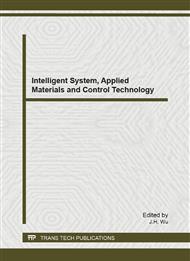p.10
p.15
p.19
p.24
p.30
p.34
p.39
p.43
p.47
Decay Characteristic of Fiber Bragg Grating and Fabrication of High Temperature Resistance Grating Temperature Sensor
Abstract:
Thermal decay characteristic of fiber Bra gg Grating (FBG) written into hydrogen-loaded optical fiber by exposing to ultraviolet (UV) laser irradiation through a phase mask is presented and experimentally demonstrated. Results of the experiment show that the FBG has a high temperature sustainability of 600 °C with main taining 26.6% of initial reflected light power after annealing for 24 hours. High temperature resistance grating based on the hydrogen-loaded conventional FBG has been fabrication and the shift of the Bragg wavelength w ith temperature is investigated over a range from -60 °C to 700 °C. The relationship between the wavelength of the FBG and te mperature indicates its feasibility as temperature sensor for high temperature.
Info:
Periodical:
Pages:
30-33
Citation:
Online since:
January 2013
Authors:
Price:
Сopyright:
© 2013 Trans Tech Publications Ltd. All Rights Reserved
Share:
Citation:


